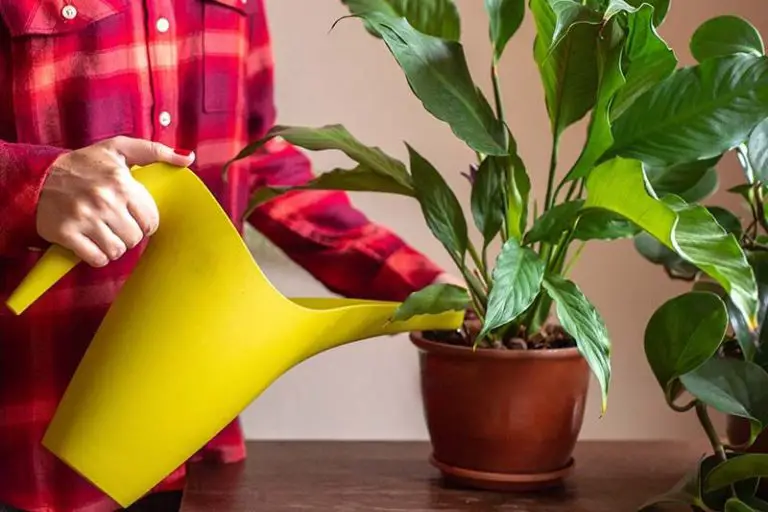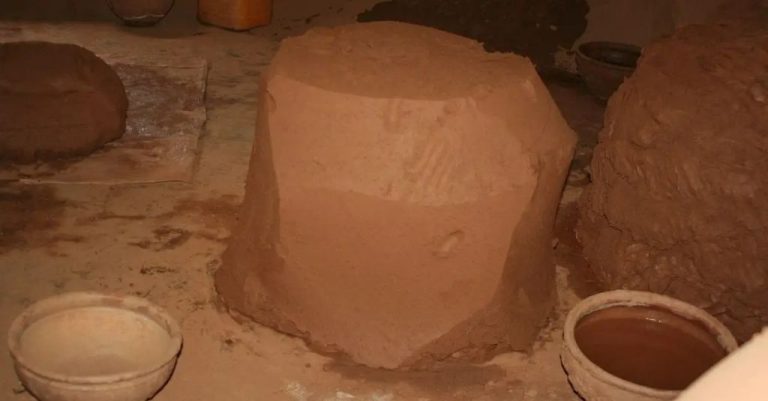What Are The Ingredients In Super Light Clay?
Super light clay, also known as air-dry clay, is a lightweight modeling material that is easy to work with and dries naturally at room temperature. It typically consists of a non-toxic base mixture to which pigments can be added to create different colors. The base generally contains some combination of cellulose-based binders, minerals, and additives that give the clay moldability and strength when dry.
The main ingredients in super light clay are water, glue, and inorganic fillers. The water allows the material to be molded like traditional clay. The glue, often a cellulose derivative, acts as a binder to hold the clay together as it dries. The inorganic fillers, such as talc or gypsum, add bulk and structure to the clay. Additional ingredients like pigments and preservatives may be included.
Super light clay is popular for crafting and modeling because it doesn’t require baking or firing to harden. It air dries naturally within 24-72 hours, making it easy to work with. Both children and adults use it for arts and crafts, hobby modeling, school projects, prototyping, and more. It’s appreciated for being lightweight, inexpensive, and easy to form intricate designs.
History of Super Light Clay
Super light clay was invented in the late 1990s by art teacher Sue Smith. Smith was looking for an air-dry clay that her elementary school students could easily work with and didn’t require firing in a kiln. Most clays at the time either needed to be fired at high temperatures or contained ingredients like flour or cornstarch that resulted in fragile pieces.
Through experimentation, Smith developed a lightweight clay recipe using ingredients like glue, cream of tartar, and laundry detergent. The clay air-dried to a firm finish, didn’t require firing, and resulted in durable pieces the students could paint and take home. Smith shared her clay recipe in a 1998 art education book, allowing the clay to gain popularity in classrooms and art studios.
Over the past 20+ years, various clay manufacturers have created their own versions of super light clay, fine-tuning the recipe and ingredients. Early versions used detergent for flexibility, while later versions relied more on ingredients like cornstarch and PVA glue. The clay is now sold under brand names like Makin’s Clay and Crayola Model Magic. While recipes vary between brands, the main focus is still an lightweight, air-dry clay perfect for kids and classroom use.
Main Ingredients
Super lightweight clay, often called air-dry clay, is made from just a few key ingredients:
Air-dry clay – This provides the base material that can be molded when wet but hardens when dry. Air-dry clay is often made from cellulose-based materials like paper or wood pulp. It allows the clay to dry naturally without needing to be baked.
Baking soda – About 1-2 tablespoons of baking soda per cup of air-dry clay is added. Baking soda is a leavening agent that will make the clay rise slightly as it dries, creating an airier and lighter texture.
Cornstarch – 1-3 tablespoons of cornstarch may be added per cup of air-dry clay. Cornstarch is an absorbent starch that helps the clay harden and adds structure. Too much can make the clay brittle.
By carefully selecting the ratios of these three ingredients, manufacturers can create modeling clays that are extremely lightweight and easy to work with but still bond strongly when dry.
Optional Ingredients
While the base ingredients of super light clay are fairly standard, there are a variety of optional additives that can enhance the clay in terms of aesthetics, scent, and texture:
Essential Oils
Adding a few drops of essential oils is a great way to give super light clay a lovely aroma. Some popular scent options include lavender, lemon, peppermint, rosemary, and vanilla. Just a small amount of oil can infuse the clay with a subtle but noticeable fragrance.
Acrylic Paint
Integrating acrylic paint into the clay mixture is an easy way to add vibrant color. Acrylics will not bleed or transfer onto skin or clothing like some other paints, making them an ideal choice. They can be mixed directly into the clay base before sculpting.
Glitter or Mica Powder
For an eye-catching shimmery effect, consider adding cosmetic-grade glitter or mica powder. These should be used sparingly, as large amounts can make the clay brittle. Just a teaspoon or two mixed in will provide a subtle yet dazzling shimmer.
Production Process
To produce super light clay, the main ingredients are first measured out and combined together. This can be done either by hand mixing in a large bowl or tub, or by using an electric stand mixer with a paddle attachment on low speed. Hand mixing takes more time and effort but allows you to carefully control the texture and consistency as you blend the ingredients.
Using a stand mixer is faster and requires less physical effort. The dry ingredients can be added all at once and mixed for several minutes to fully incorporate. Whether hand mixing or using a stand mixer, it’s important not to over-mix as this can cause the clay to become too stiff.
Once the ingredients are well blended, the clay mixture is ready to be conditioned. This involves kneading it by hand to improve its elasticity. Conditioning is an essential step to create smooth, flexible clay that doesn’t crack or crumble when sculpting. The clay is kneaded for 5-10 minutes until soft, pliable and free of lumps.
After conditioning, the clay can be shaped as desired or stored in an airtight container or bag. To cure super light clay for optimum hardness and durability, it needs to be baked in the oven. Small sculpts are baked at 275°F for 15-30 minutes. Larger pieces may require longer baking times of 1-2 hours at 225°F. Allow all baked clay pieces to fully cool before handling.
Uses
Super light clay is popularly used for crafting and modeling. Its soft texture makes it ideal for shaping into jewelry, figurines, and other decorative items. Because it air dries, the finished pieces retain their forms without needing to be baked. This allows even young crafters to create lasting works of art.
Kids enjoy playing and molding with super light clay. As a clean, non-toxic material, it provides hours of creative fun without parents worrying about messes or health hazards. Children can shape animals, fantasy creatures, their favorite toys, and more. And unlike Play-Doh, their finished models won’t dry out if left unfinished overnight.
Many people use super light clay for ornament crafting. It can be shaped into detailed holiday decorations, cake toppers, or custom gift tags. Lightweight clay is easy to glue onto surfaces with decoupage or attach to wire for hanging. When painted with acrylics or sealed with varnish, super light clay ornaments can last for many seasons. Its durability makes it a versatile material for handmade craft supplies.
Benefits
Super light clay offers several key benefits that make it an appealing choice for artists and crafters.
One of the main benefits is that it is very lightweight. Super light clay contains air pockets that reduce the density and weight of the material. A finished clay sculpture made with super light clay can weigh 80% less than the same sculpture made from traditional clay. This makes it much easier to work with larger projects and reduces shipping costs for finished pieces.
Another desirable benefit is the air-dry convenience of super light clay. Unlike other clays that require firing in a kiln, super light clay simply dries and hardens at room temperature. This allows artists to skip the kiln firing step and makes the material very beginner-friendly. Projects made with super light clay can be completed and handled much more quickly than traditional clays.
Additionally, super light clay’s texture and properties allow it to hold fine detail very well. The material is smooth and elastic, which enables sculpting of delicate features and textures. Crafters appreciate super light clay’s ability to pick up impressions and create intricate designs.
Drawbacks of Super Light Clay
While super light clay has many benefits, it also comes with some drawbacks to be aware of. The main drawbacks of super light clay are that it is weaker and more delicate than traditional ceramic clays, and it has more limited usage compared to polymer clay.
Due to its lightweight, airy composition, pieces made from super light clay tend to be more fragile and prone to breaking or cracking than items made from denser clays. Super light clay has lower strength and durability compared to ceramic clay bodies that contain more natural minerals, fillers, and grog. This means extra care must be taken when handling super light clay to avoid damage.
The types of items and projects that can be created with super light clay are also more limited compared to other clays like polymer clay. For example, super light clay is not well-suited for items that will receive heavy use or need to bear weight. Intricate, thin, and delicate structures may be difficult to achieve. The lightweight nature also means super light clay pieces require extra care during baking to prevent cracking or warping.
So while super light clay has many advantages like reduced weight and easier handling, creators do trade off some structural strength and versatility compared to other sculpting clays. Being aware of these limitations is important when selecting the type of clay to use for a project.
Variations
There are many variations of super light clay available. Some of the most popular include:
Colored Clay Varieties
While plain white super light clay is most common, colored varieties are also available. Clays can be found in a rainbow of colors, achieved by adding non-toxic pigments and dyes during production. Popular colors include primary colors like red, blue, and yellow, as well as pastels like pink, lavender, and mint.
Clay with Softeners or Firmers
Some super light clay contains additives to make the clay softer or firmer. Softening agents like glycerin or corn starch can make the clay more malleable and easier to shape for beginners. Firming agents like liquid clay can help add strength and reduce fingerprints in projects.
DIY Clay Recipes
Crafters have come up with many DIY recipes to make homemade super light clay. Common household ingredients like cornstarch, glue, and cream of tartar can be combined to produce lightweight air-dry clay. DIY clay is cheaper than buying premade clay, but requires more preparation and won’t achieve the same smooth consistency.
Conclusion
Super light clay is made from just a few main ingredients – water, starch, and an art supply grade non-toxic polymer. The starch, typically corn, potato, or wheat starch, acts as a thickener while the polymer provides flexibility and durability when dried. By varying the ratios of these simple ingredients, artists can create clays with a wide range of properties suitable for anything from ultra lightweight crafts to molded sculptures.
With its light weight and ability to harden without firing or baking, super light clay is ideal for creating delicate structures, detailed shapes, jewelry pieces, Christmas ornaments, and temporary sculptures. Its low-mess, non-toxic qualities also make it a great choice for kids’ crafts and school art projects. While super light clay may not be as strong or archival as ceramic clay, its versatility and easy use make it a valuable tool for all kinds of crafty fun.



